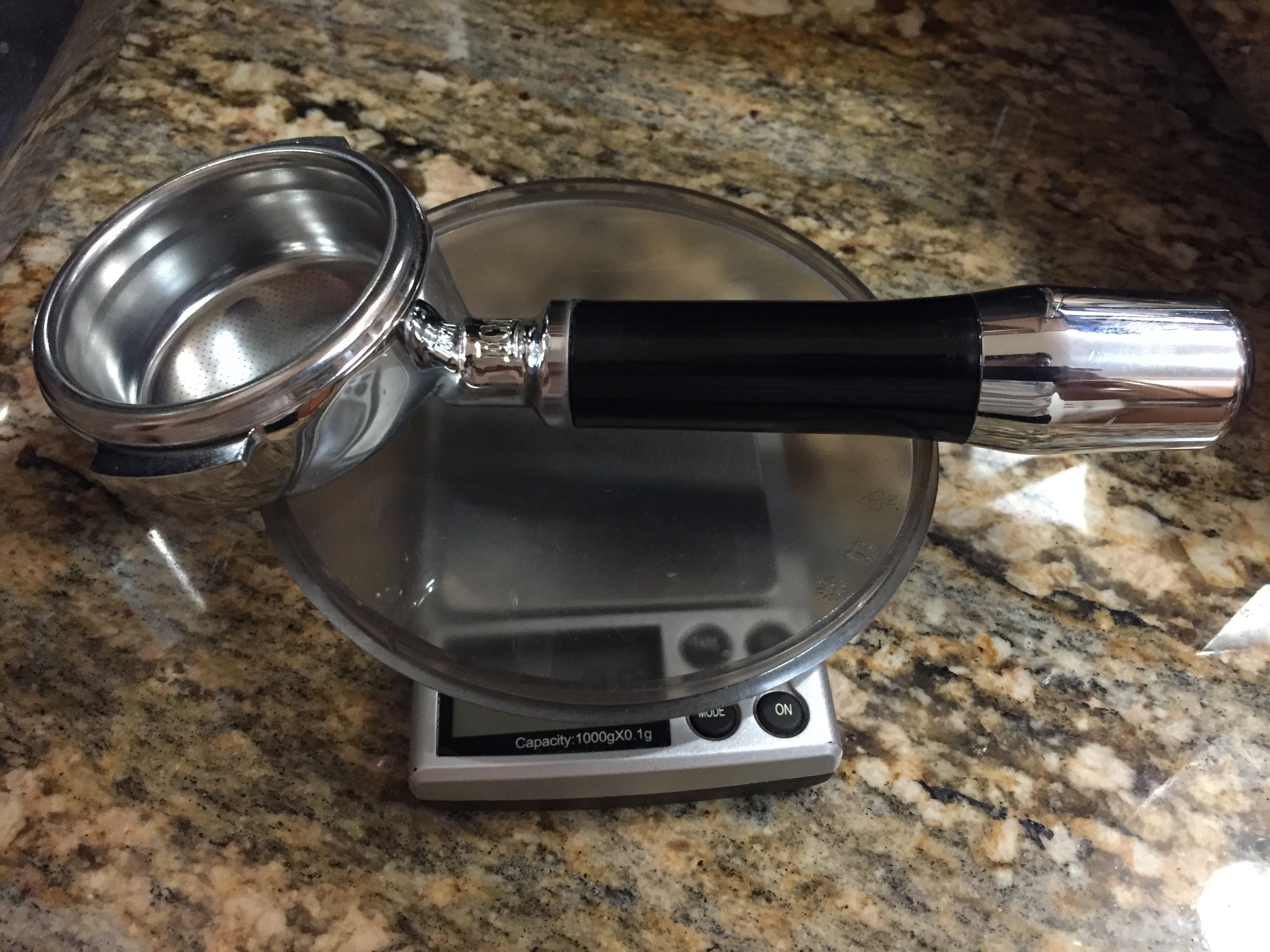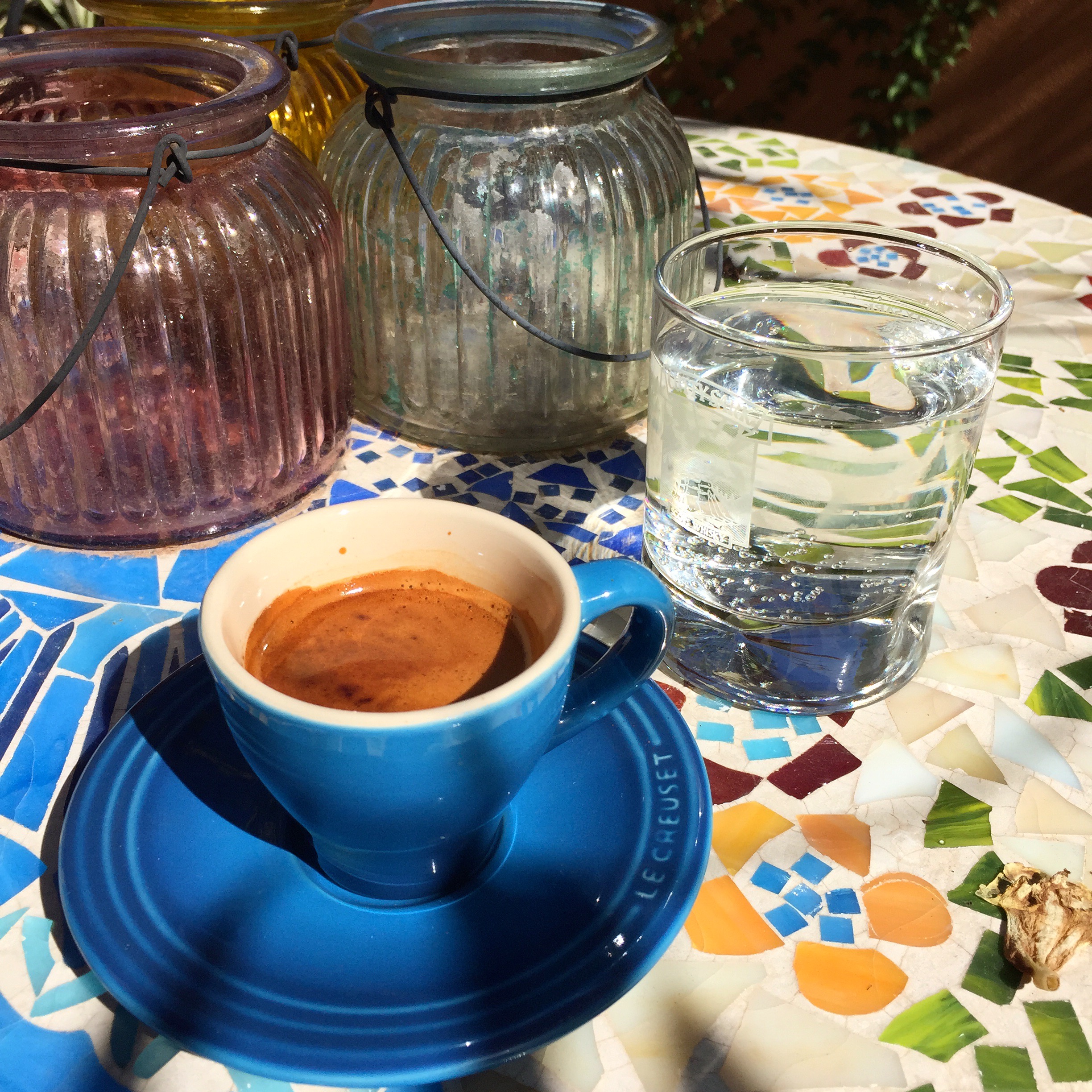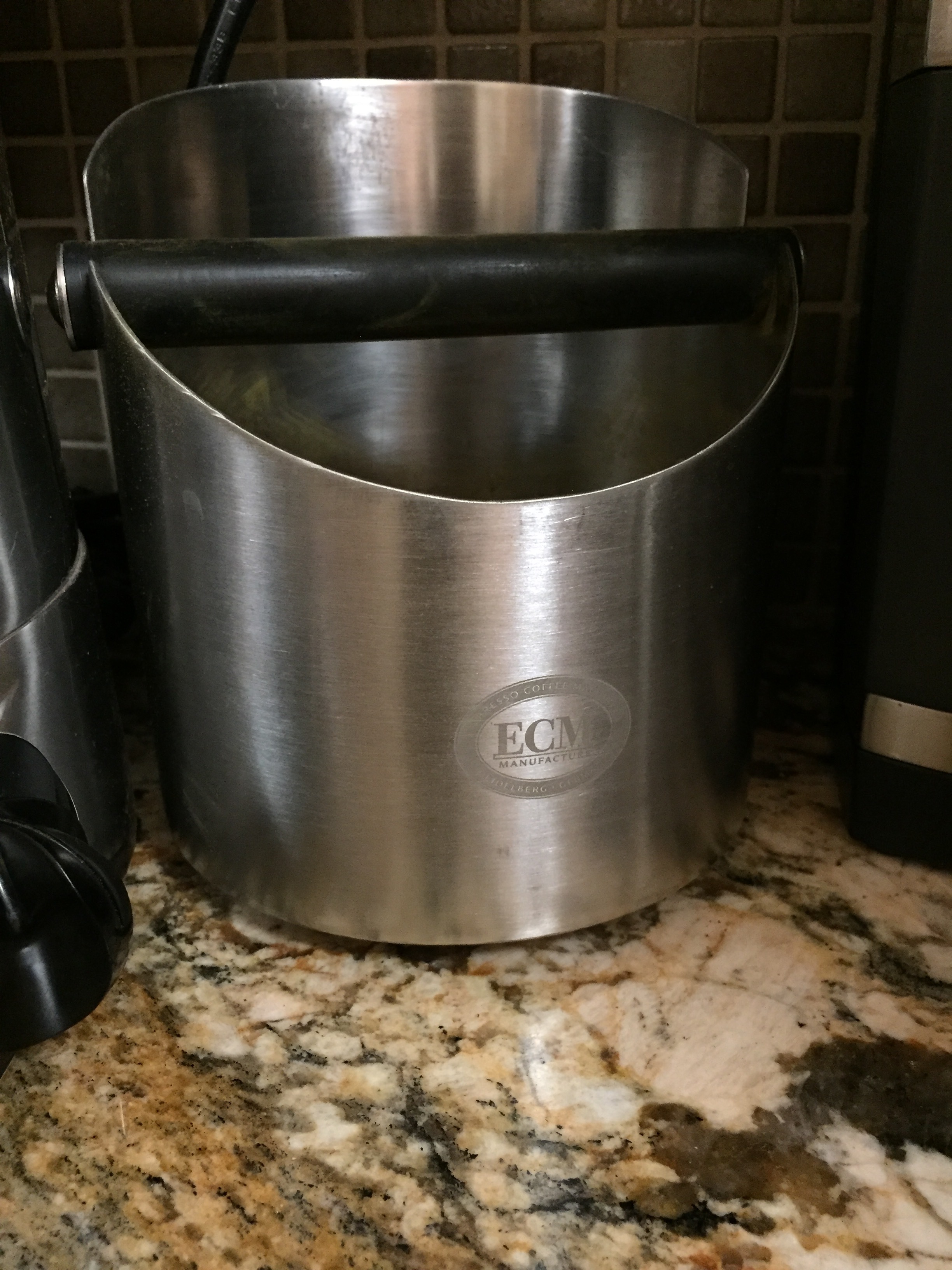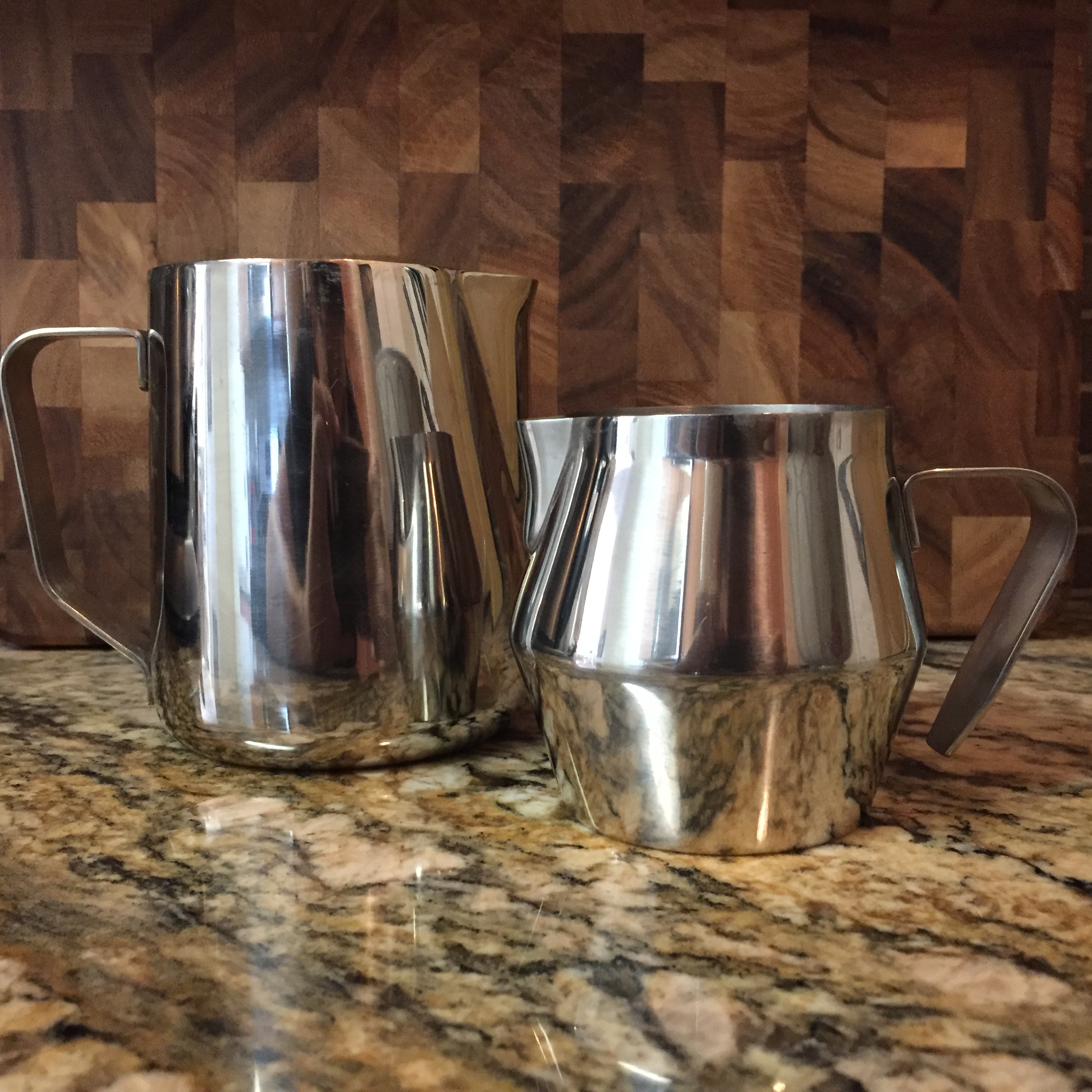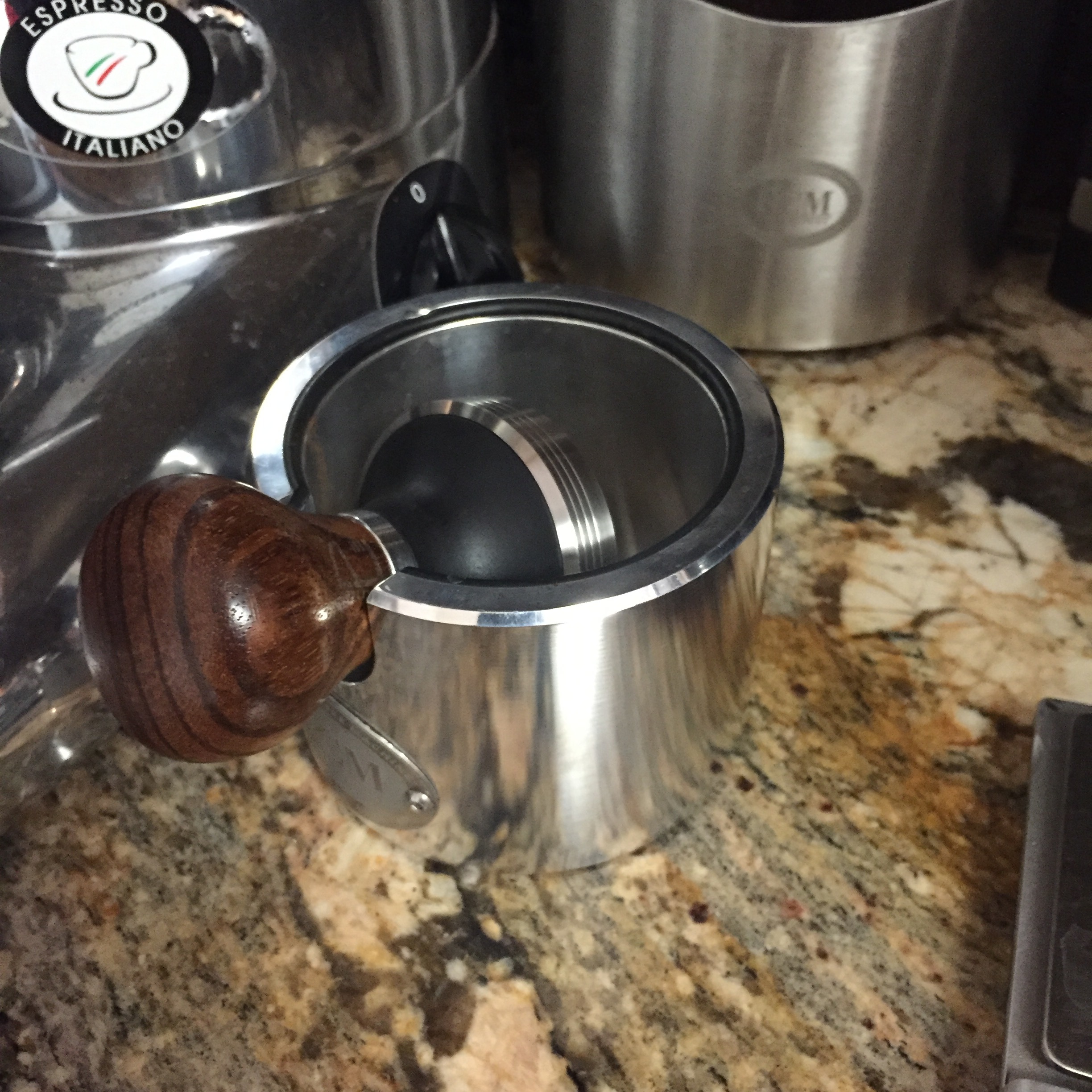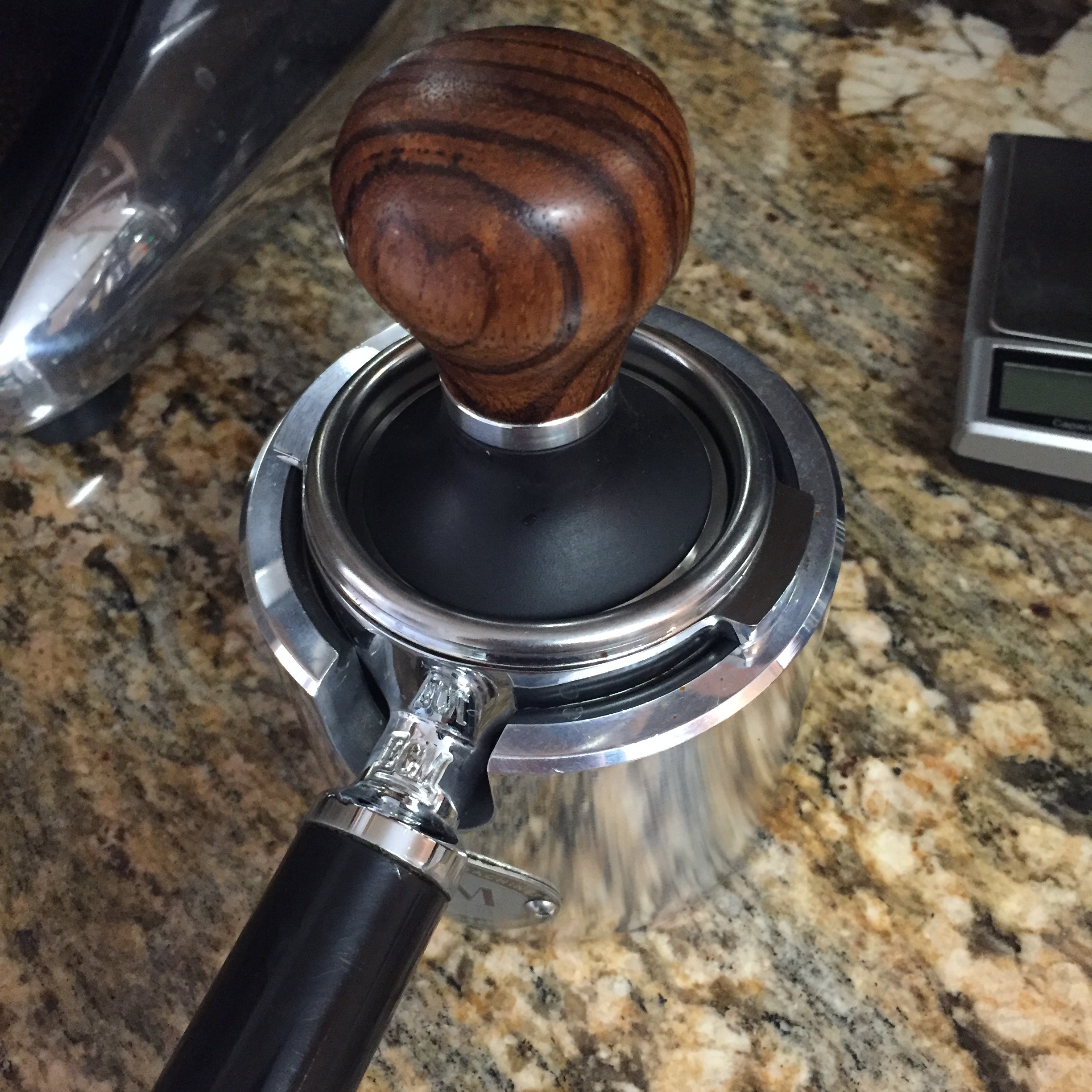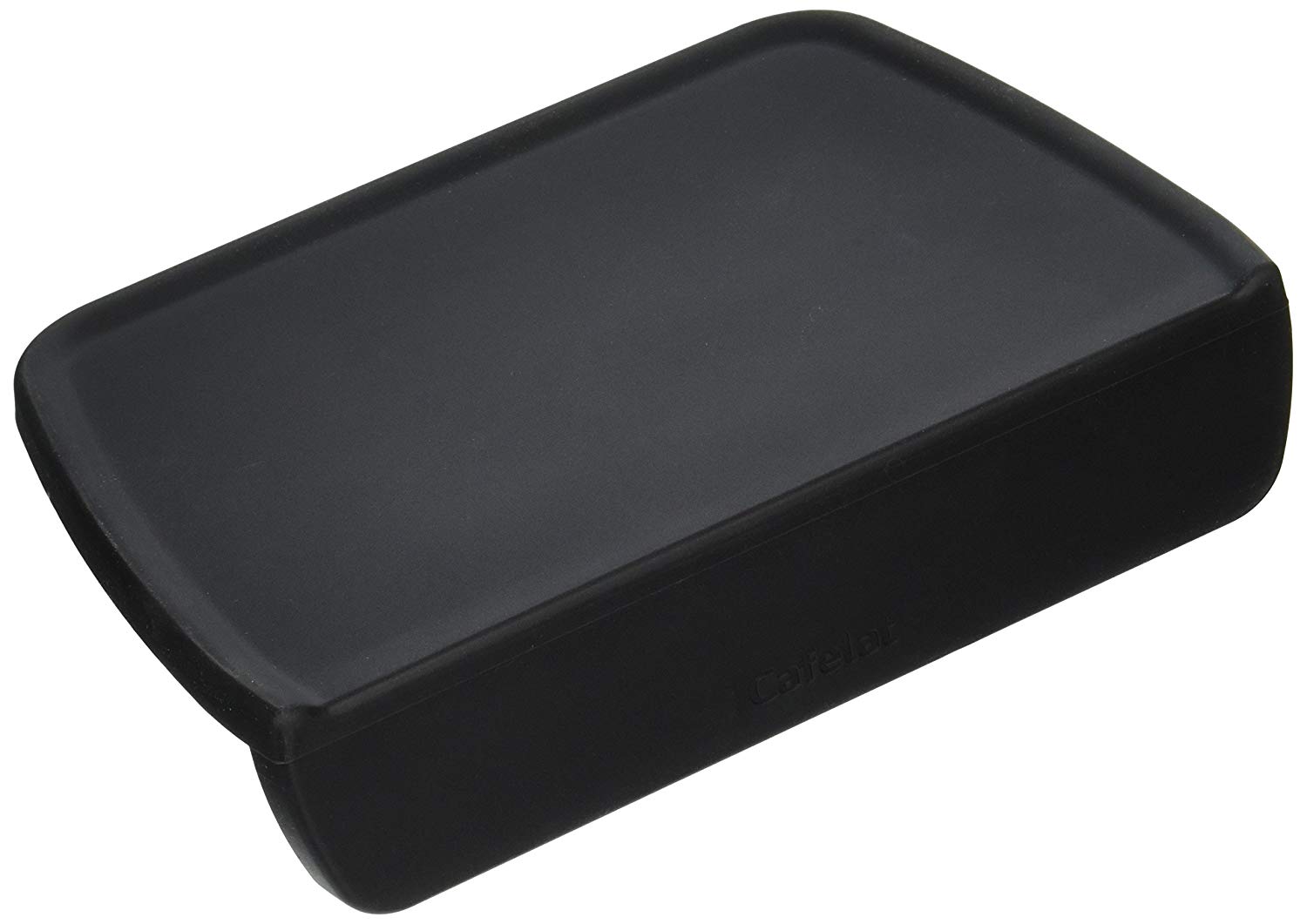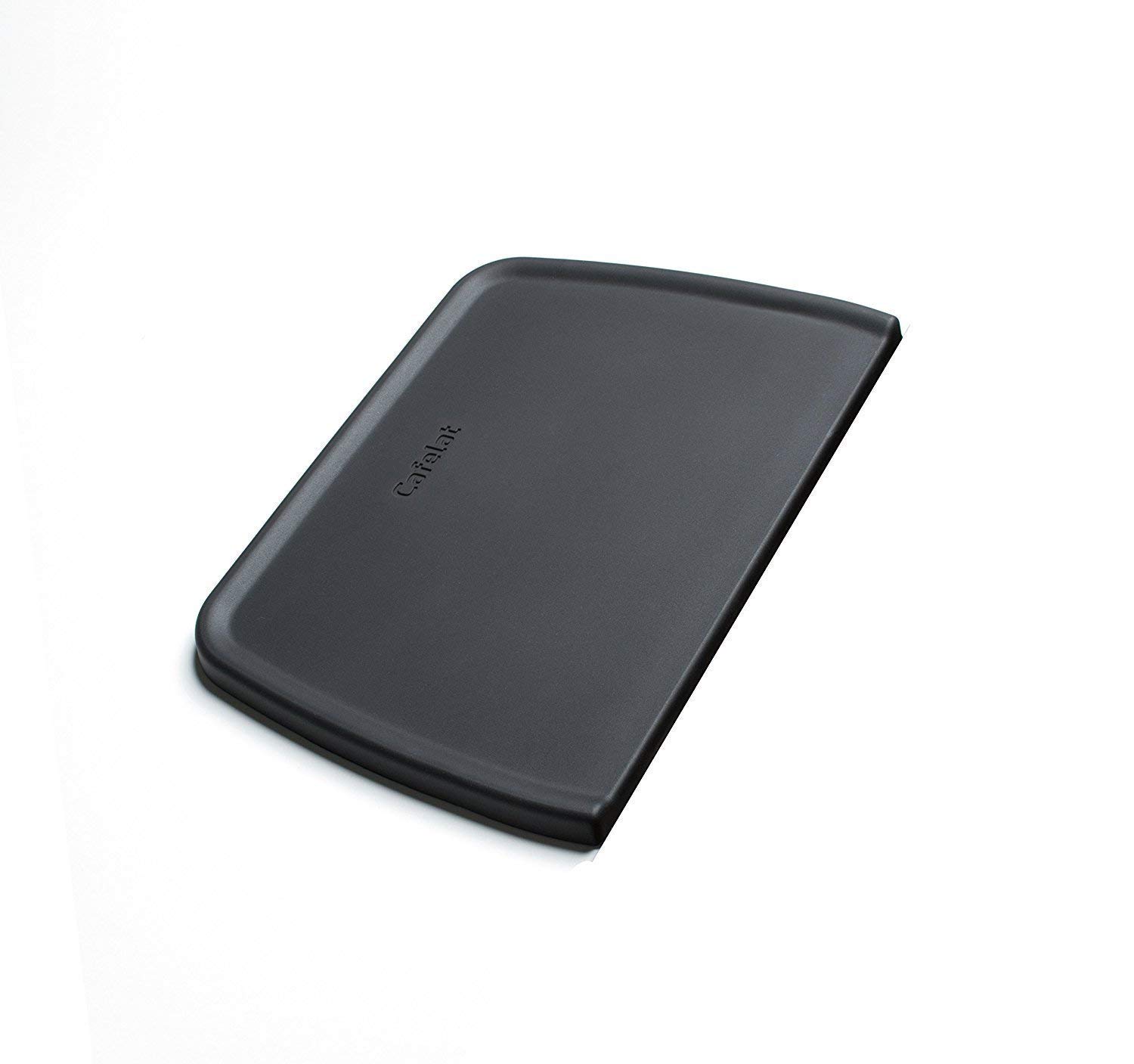So, you have all of the brewing gear, or maybe you've got it in the online shopping cart, ready to fire, what else do you need? In this post, I'm going to cover all of the accessories I have and regularly use in my coffee kit for both brewed coffee and espresso. Click through any of the images or bold text for links, or refer to this BLOG post for a simple and straightforward shopping list.
Scale
The lid of my Baratza grinder works perfectly for balancing the portafilter on my scale. Click through to Amazon for Scale.
This is the single most important tool in coffee making not directly related to coffee equipment. I would also say that after a quality grinder, quality coffee, good water, and good technique, a scale will have the biggest impact on improving quality and consistency in your coffee making. Using a scale to measure your coffee mass, water mass, and output when making brewed coffee or espresso significantly reduces variables in the process and allows you to better understand the effects of changing brewing parameters. If we measure the amount of coffee used in weight, why not measure the weight of the water and the weight of the output as well, so you're comparing apples to apples, rather than comparing mass to volume? Scales can be as basic as a generic jewelry scale from Amazon to coffee specific scales with their own apps and data tracking, like the Acaia Scales. No matter what is is, it should be accurate to 1/10th of a gram (0.1 g), and I would recommend a 1-2 kilogram max. In general, the heavier the upper limit, the more expensive the scale.
Other things to consider are the size of the scale - some of these on Amazon are actually really small, making it difficult to place various vessels for brewing into or a portafilter on them. The one I purchased three or four years ago, because it was the cheapest one on Amazon at the time, is quite small, but I have found some workarounds for that, like using the lid from my grinder to rest the portafilter on. If you plan on using it on the drip tray of your espresso machine, the small form factor can actually be a benefit, so all things to consider.
The Brewista is very feature rich, specifically for coffee brewing, with many modes. Photo courtesy of Brewista, click through to purchase.
Other than that, it's more of a preference of features. On the basic side of things, finding scales that have an easily accessible tare button and do not auto shutoff too quickly are helpful when brewing. More coffee specific scales will typically have water resistant coatings or construction, and some will feature auto-tare features, such as this Brewista Ratio SCale for $98 here. Others, like the Hario Drip Scale $45, feature a built in timer, which is very convenient when brewing, so you don't have to pull out your phone or other timing device (though a vintage chronograph does come in handy).
With the $10-$20, and $50 - $100 price ranges covered, there are a few that I've seen come and go via kickstarter pages, but the one that pretty much owns the market in high end, coffee specific scales, are those from Acaia. Acaia basically created the iPhone of scales by cleaning up all of the interface while making it super feature rich. It is rechargeable, water resistant, has .1 gram accuracy, built in timer with 20ms response time, and its own apps which can break down your brewing, displaying things like flow rate, brew time, brewing graph, tasting notes, etc. With the ability to receive firmware updates this scale should only improve over time with nearly endless possibilities. They're not cheap, starting at $150 and going up to $220, but if these bells and whistles appeal, there's really nothing else like it on the market at the moment.
Cups!
You probably already have some coffee mugs in your cabinets that will work just fine, but having the "correct brewing vessel" for the beverage can be quite nice, and functional. I say functional because some may have the correct size to better fit your brewing vessel or clear your porftafilter spouts, and some may simply fit in your hand or be more enjoyable to drink out of. The other functional aspect of it is the material. Many simply prefer porcelain as the material of preference. Why does it matter? Try drinking water out of a coffee mug. It kind of tastes different, doesn't it? The cup can absolutely influence your perception of the drink. The bonus, is that this is also an area to kind of add some custom flavor to your setup, as cups come in a ton of different colors, shapes, designs, etc., and most people typically leave a few on top of their machine to warm the cups. Although cups are as much about personal preference as anything, here are some basic styles and things to think about when you select some porcelain.
The Basic Coffee Mug
Mainly targeted at brewed coffee, your basic mug is largely personal preference. However, things to look for include the weight of the mug - this will help keep your coffee hot longer, and the size - both height and width.
Height can be something to keep an eye out for if you think you might brew Americanos with slightly more water, like an 8 oz Americano, and want to just pull the shot straight into the cup. Especially if you are using a spouted porftafilter, the clear height to be able to get the mug under the portafitler can get quite tight.
The other size consideration is the overall width of the opening. Again, if you want to brew directly into the mug, the opening needs to be a size that will accommodate the brewer. For example, the wide, red cup below looks great and comes in other colors, but the rim is too wide to place a V60 or an Aeropress on.
The "cozy" gigantic coffee mugs look good but don't accommodate most brewers.
Cups for Espresso Beverages
The demitasse is the short, typically less than 3 oz cup intended for a straight shot of espresso or perhaps a macchiato. Overall shape and how it fits into your hand, and appearance are the main factors here. Another attribute to consider is the opening width, as I do have one or two taller and more narrow demi's that are a bit on the narrow side to catch the liquid if using a bottomless portafilter. My usual go to is from Le Creuset; these cups are tulip shaped and the coloring is just fantastic. They're well made, comfortable to hold, retain heat well, and the gradient and richness of color is just captivating in person. The added bonus is that they are much more readily available since many department stores carry Le Creuset's, full line, $30/set of two cups/saucers.
Cappuccino Cups
Espresso based drinks are typically defined by their size, so the cups are often times the name of the drink. Cappuccino cups are typically between 5 and 6 ounces in size can, like most espresso based cups, typically come in a bowl or tulip shape. Shape of the cup is more personal style preference than anything, although some find the wider bowl of the non-tulip cups easier to pour latte art in because you have a little more surface area to work with. Majority of all espresso based cups with come with an accompanying saucer which can be pretty functional when serving drinks to guest. It took them awhile to get to the USA but because of the popular demand, New Zealand based Acme & CO cup are now available in the US and on Amazon here. These cups come in all of the classic sizes and shapes with beautiful colors sure to make your coffee bar look on point.
Latte Cups
Latte cups are traditionally around 8 ounces in size, though some of the larger ones can be 10 or 12. I would say since a latte is kind of like the "cozy" drink of the coffee world, having a cup that is comfortable to hold, drink out of, and sits nicely in the hands is important. Not Neutral are kind of the standard porcelain provider for most third-wave American cafes, with a modern clean aesthetic and comfortable shape. The Not Neutral Lino latte cups are as beautiful as they are functional.
notNeutral Lino Latte cups. Photo courtesy of notNeutral, click through to order.
The Rattleware Graduated Shot Glass/Pitcher is a handy tool that everyone seems to really like. It's great for new baristas to quantify beverage volume, it's very easy to handle with the nice handle, and the dual pour spouts make it a cinch to split shots and pour into drinks. It kind of seems simple that a shot glass can be so great, but this is one very useful and well thought out design.
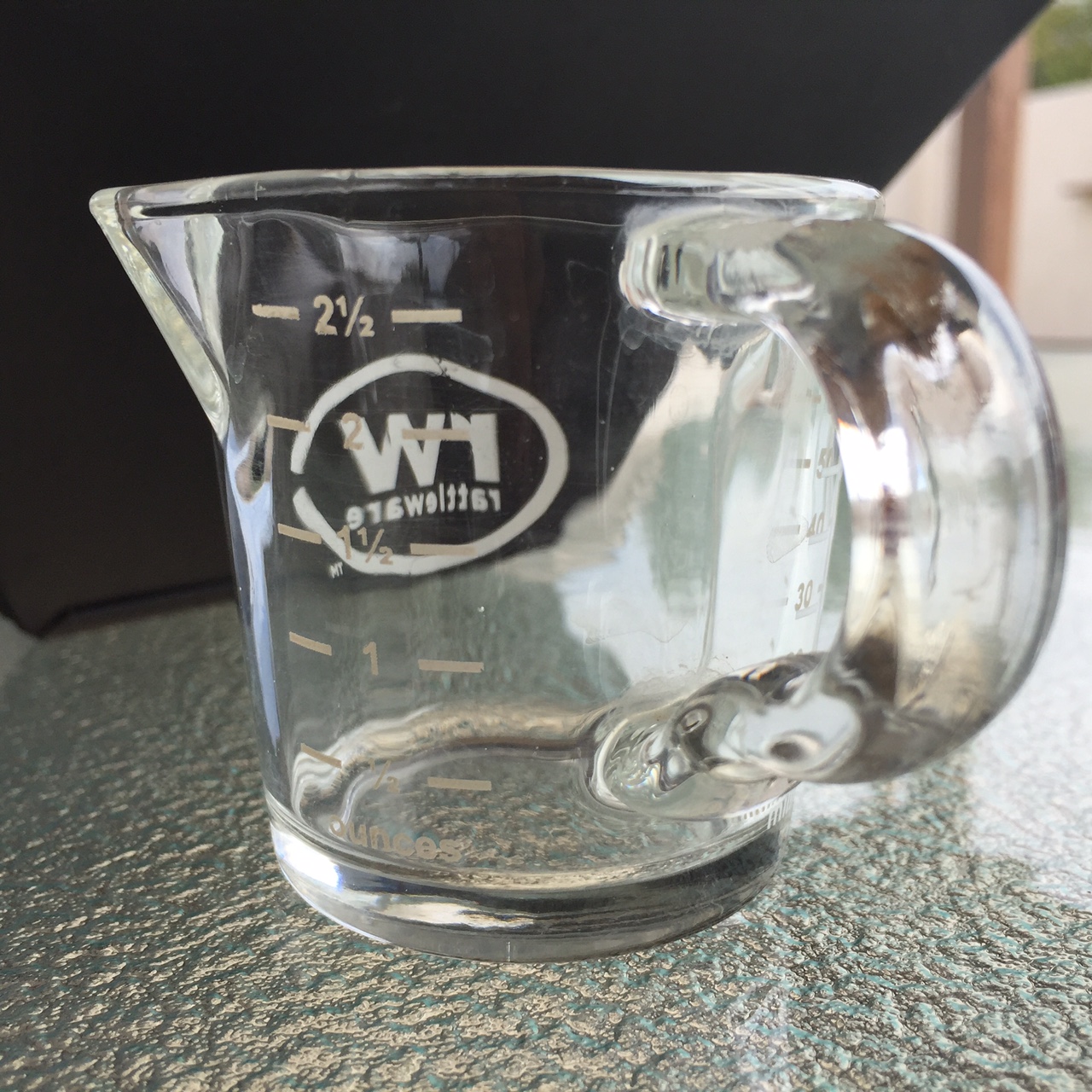
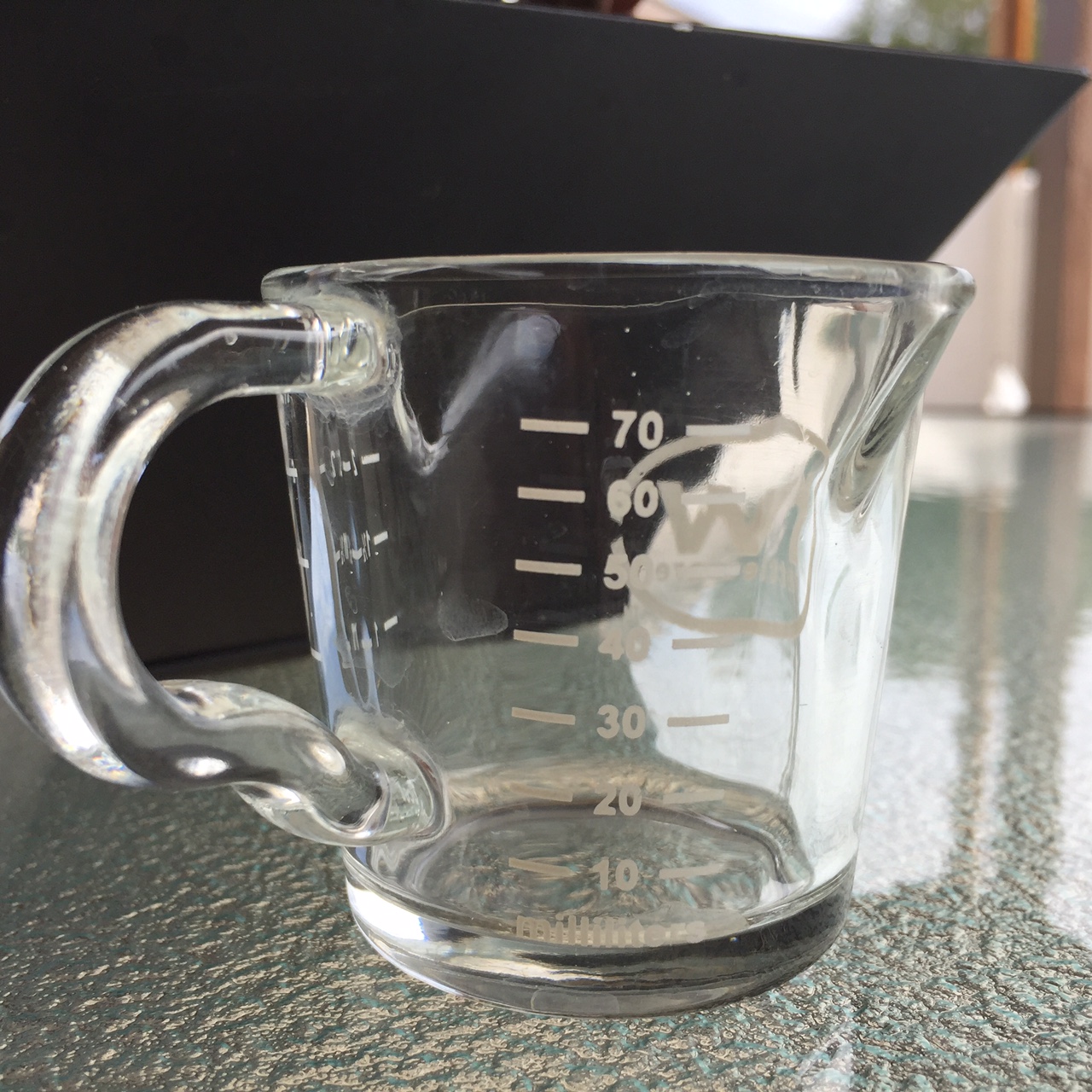
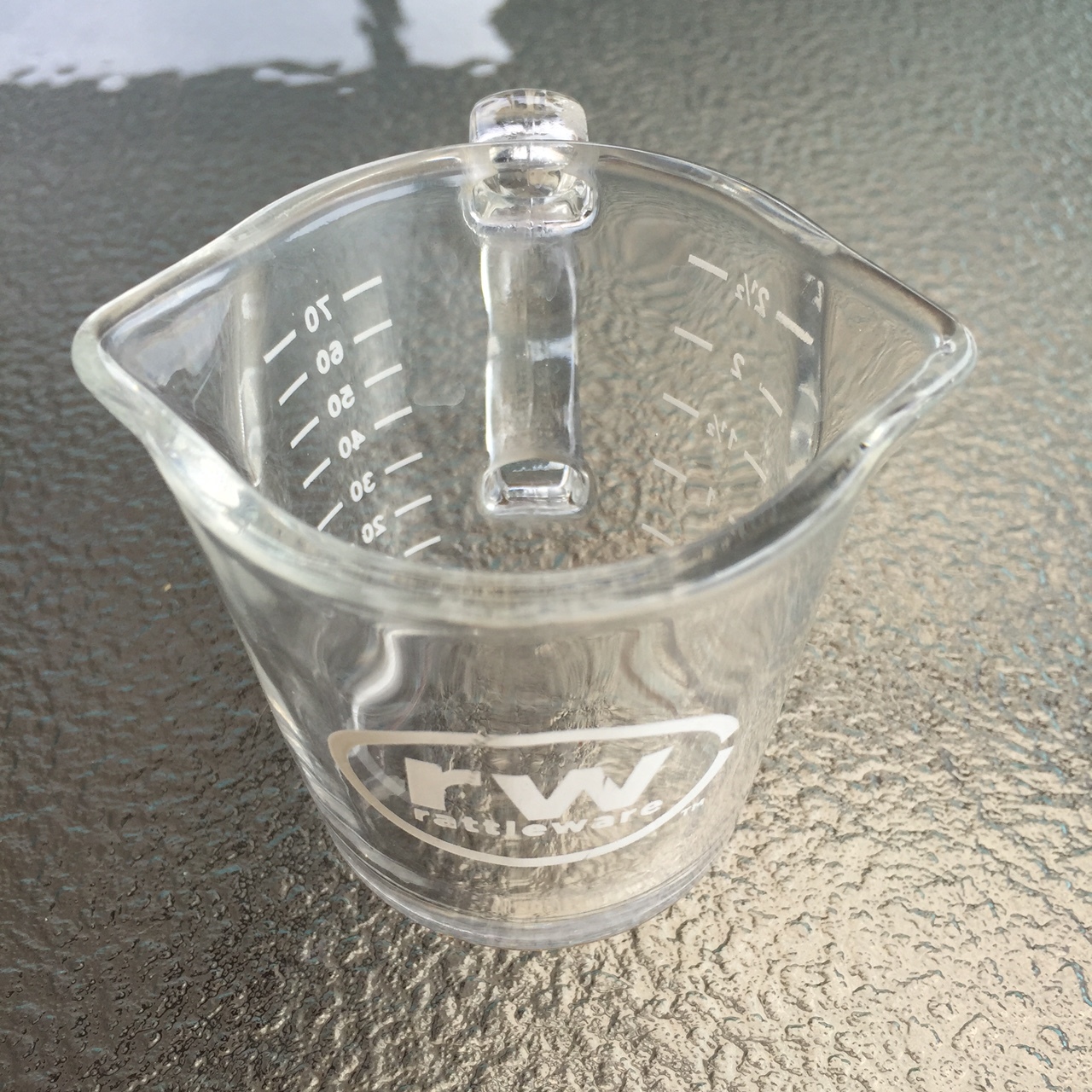
Espresso Accessories
Making espresso drinks requires other tools and accessories in the process. Some of these, like a knock box are nearly vital, while others, like a tamper stand, are more of a convenience.
Knock Box
The Knock Box is one I'd list in the vital category. Discarding spent espresso pucks without one is possible, but would be much more labor intensive and messy. Knock Box design is largely personal preference, but I typically recommend one with a higher back splash to catch any stray grounds. I would also say to buy one larger than you think you need. For whatever reason, they always seem much smaller once you start getting some spent pucks in there. Fortunately, I received this one with my espresso machine, and it has a good capacity, isn't too bad looking on the counter, and has a nice high back splash.
For a little more color, the Grindenstein Knock Boxes come in a variety of different colors, here from Amazon.
The Grindenstein comes in many colors and two different sizes. Photos courtesy of Grindenstein on Amazon, click through to purchase.
Steaming Pitchers
Steaming Pitchers are another must have if you intend on making milk drinks. The two big factors here are size, and shape. For size, you need to have the right sized pitcher based on the size of drink you're making. Too large of a pitcher and you'll have to use too much milk to be able to get the steam wand to reach and you'll end up with a lot of waste. Too small of a pitcher and you risk the milk expanding too much and overflowing the pitcher. Being that steaming milk has a lot to do with technique and creating the proper texture of milk, having the right sized pitcher is important to control that.
A good starting point is to have 12 and 20 ounce milk pitchers for different sized drinks. These from Rattleware are pretty standard, no-frills basics and are relatively affordable. There are more expensive options out now from Barista Hustle and Decent that are marketed as precision options for more accurate milk portioning and better latte art pouring.
I would also recommend a milk steaming thermometer for the beginner barista to get a hang of how long (hot) to steam the milk. I like this one from Rattleware because it’s inexpensive and also has a green colored band to indicate the appropriate temperature window.
Tamper and Tamping Stand / Mat
The tamper is arguably part of the basic kit, more of a piece of equipment than an accessory, plus I think I pretty well covered them in the this post. But the tamping process as a whole also comes with some accessories, and is largely how you like to prep your baskets and the workflow you learned. I spent my first few years in the espresso process without a tamping stand or mat, simply laying a towel on the edge of the counter. For those using bottomless portafilters, this works just fine. However, when using spouted, and especially single spouted portafilters, that becomes much more challenging. If you have a good corner on the edge of your counter, you can sometimes rest the front lip of the portafilter on it and tamp. Or if you have a very stout portafilter you can tamp against the spouts, but with only one spout, that is out of the question too. This is where a tamping stand or station comes into play. Tamping stations can keep things nice and consistent, protect your portafilters and your counters, and allow you the ability to use single spout portafilters. I also particularly like that they give you a place to rest or store your tamper when not in use. Like my other ECM accessories, this tamping station has served me quite well. Had I not received this one, I think my next look would be to something like this option from EspressoParts, with a nice flat portion to set your tamper as well.
A tamping mat like these options from Cafelat are nice to save your counter tops and easily wipe up any messes.
Dosing Funnel
Before you can tamp, you need to get the coffee into the filter basket. If you have a grinder that requires WDT or even just to keep things a bit tidier between the grinds chute and the basket, a dosing funnel can be a nice way of catching all the stray grounds and speeding up workflow. This option available from Fruition Tamp & Coffee is more readily available on Amazon Prime than some of the more boutique offerings, and appears to have all of the same functionality and even mentions it is perfect for WDT.
Cleaning Supplies
Keeping coffee equipment clean is imperative, you don't want any residues or unwanted anything detracting from the taste of your coffee. Brewing equipment is typically very easy to keep clean just by washing like regular dishes. Espresso equipment contains a few more nooks and crannies for the tiny coffee grounds to get into, thus residues can develop.
A good, espresso specific and safe detergent, like this one from EspressoParts, is always handy and useful. I also find it particularly good for getting any built up residue on the bottom of hard to reach travel mugs. Detergents like this can be great for cleaning and soaking portafilters, filter baskets, mugs, and brew group components. I also add a dash of detergent when backflushing the brew group. Care should be taken when using detergents though, as they can deteriorate sensitive components such as group gaskets. Although I backflush with water nearly every day, I typically only backflush with detergent every 2-4 weeks, depending on machine usage.
The next couple of items can actually be bought in a complete cleaning kit from EspressoParts as well, here.
A group brush, such as this one from Pallo, is really handy. I suppose something like a (unused) toothbrush could also suffice, but this one is particularly nice because the bristle heads can be replaced, it has scoop for detergent on the other side, and a pick to clean steam wand holes as well. The ridges on the neck of the brush also ingeniously keep water from running down the brush and burning your hand when cleaning the group.
Another hand brush to have, like the one included in the kit from EspressoParts, is just a basic paint brush style that good for cleaning the neck or burr chamber of the grinder or sweeping up stray grounds. Coffee can be messy and cleanliness is next to godliness or something like that, so having some brushes and towel system around is always a good idea.
Although maybe not every essential accessory under the sun, this list should get most of you a good start. Do you have a favorite coffee accessory that makes life easier or any questions on equipment or accessories? Feel free to reach out via social media or the contact page.

